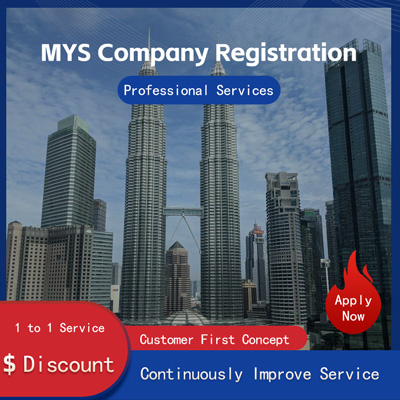
How to Avoid Losses and Damage When Handling Overseas Warehouse Inventory
How to Prevent Loss and Damage of Goods in the Inbound and Outbound Processes of Overseas Warehouses?
In today's increasingly frequent international trade, overseas warehouses have become an important component of cross-border e-commerce, playing an increasingly prominent role. However, in actual operations, the loss and damage of goods remain a problem that troubles both enterprises and consumers. To ensure the efficient operation of the logistics chain and avoid unnecessary economic losses, it is particularly important to explore effective measures for protecting goods.

Firstly, clarifying responsibility division is the first step to prevent the loss of goods. Overseas warehouses usually involve multiple parties, including shippers, carriers, and warehouse service providers. Once goods are lost, all parties often blame each other. It is crucial to sign clear contract terms. For example, clearly define the handover time and responsible person for each item, and specify which party is responsible when goods are lost or damaged during a specific period. Using modern technology such as installing surveillance cameras and using RFID tags can track the status of goods in real time, thereby effectively reducing omissions caused by human factors.
Secondly, improving the professional level of warehouse management is also key. Many overseas warehouses, due to their small scale or low management standards, often face chaotic situations. Therefore, companies should choose qualified warehouse service providers and regularly train their staff. For instance, some well-known international logistics companies have established comprehensive standard management systems, strictly following established procedures from inventory verification to packing. Meanwhile, introducing automated equipment like intelligent sorting systems and three-dimensional shelves not only significantly improves operational efficiency but also greatly reduces risks caused by human errors.
Thirdly, addressing the issue of damaged goods requires improvement from packaging design. Currently, many products suffer severe damage during transportation due to insufficient protection. It is recommended to adopt a multi-layered packaging strategy, adding cushioning materials on the outer layer and functional accessories such as waterproofing and shockproofing. It is worth noting that different types of goods have varying packaging requirements. For example, electronic products require more attention to anti-static treatment, while fragile items need enhanced shock absorption performance. One can also refer to best practices in certain industries, such as Amazon’s Frustration-Free Packaging initiative, aimed at providing more environmentally friendly and easy-to-open product packaging solutions for consumers.
Additionally, establishing a sound risk prevention mechanism is equally essential. No large warehouse can completely eliminate unexpected events, but losses can be minimized through the formulation of emergency plans in advance. Specifically, a dedicated risk management department can be set up to collect and analyze historical data, predict potential hazards; and establish insurance compensation mechanisms so that timely economic compensation can be obtained when unfortunate events occur. Notably, with the development of blockchain technology in recent years, more and more companies have begun to apply it to supply chain management, which will help achieve information transparency and further enhance trust among all parties.
Finally, strengthening communication with customers cannot be overlooked. Often, problems with goods are not purely technical issues but misunderstandings caused by information asymmetry. Whether before or after the goods are stored or shipped out, one should actively inform customers of related progress and listen to their feedback. Especially when dealing with special orders, one must remain highly vigilant and execute tasks strictly according to customer requirements. For instance, a cross-border e-commerce platform once faced complaints due to improper storage of a batch of custom gifts. After thorough investigation, it was found that there was an internal process error. This incident reminds us that only by truly valuing every customer's needs can long-term cooperation relationships be won.
In conclusion, preventing loss and damage of goods in the inbound and outbound processes of overseas warehouses is a systematic project that requires comprehensive efforts from institutional construction, technological application to humanistic care. Only in this way can a safe and reliable logistics network be built, creating more value for enterprises while providing better shopping experiences for consumers. In the future, with the acceleration of globalization and technological advancement, solutions in this field will undoubtedly become more mature, better serving the trend of global economic integration.
Still have questions after reading? More than 98,000 users have contacted us. Please fill in the following information to obtain business information.

Previous Article
Key Features of Ocean Transport and Analysis of Its Advantages and Disadvantages
May 25, 2025Next Article
Research on Synergy Strategy of Amazon FBA and Third-Party International Express Services
May 25, 2025Service Scope
MoreRecommended for You
- SF Express International Business Overview
- Common Additional Fees for International Air Express Explained
- In-depth Analysis of Canada Ocean Freight Logistics Pricing Structure and Shipping Cost Calculation Method
- China-UK Rail Freight's New Momentum Reshaping Cross-border Logistics Dynamics in China-Europe Trade
- Air Freight FBA vs. Sea Freight In-Depth Analysis of Logistics Mode Selection Decision Models
- FBA First Leg Air Freight Logistics Transit Time Billing Methods Explained
- Counterfeit Goods in Cross-Border Logistics How Customs Identifies Fakes and the Challenges Involved
- Analysis of Matson Express Vessel's Charging Standards and Operational Process
- Must-See for Cross-Border Sellers! Guide to Avoiding Common Air Freight FBA First-Mile Logistics Traps, Saving You Time and Money
- FBA First Mile Logistics Pricing Quick Direct FBA First Mile Service Price List
- What is US FBA Sea Freight? - A Comparison with Traditional Ocean Shipping
- U.S. FBA Transport Breakthrough In-Depth Analysis and Tactical Guide on Air Freight Mode
- How to Choose Between Matson Express and Standard Ocean Freight for Cross-Border E-Commerce Sellers?
- U.S. FBA Air Freight Process and Customs Clearance Requirements Analysis
- High US FBA First-Mile Logistics Costs? These Tips Can Help Reduce Expenses!
- Key Considerations and Advantages of International Sea Freight Logistics
- U.S. Sea Freight Logistics Explained
- Air Freight FBA First Leg Cargo Detained Solutions for Customs Clearance Issues Prevention Strategies
- How to Avoid Customs Seizures in Cross-Border E-Commerce Logistics A Strategic Analysis
- FBA First-Mile Logistics Unlocking the Key to Efficient Cross-Border E-Commerce Operations


 ONE
ONE








Customer Reviews
Small *** Table
December 12, 2024The experience was very good. I was still struggling to compare it with other companies. I went to the site a few days ago and wanted to implement it as soon as possible. I didn't expect that everything exceeded my expectations. The company is very large, with several hundred square meters. The employees are also dedicated and responsible. There is also a wall of certificates. I placed an order on the spot. It turned out that I did not make a wrong choice. The company's service attitude is very good and professional. The person who contacted me explained various things in detail in advance. After placing the order, the follow-up was also very timely, and they took the initiative to report the progress to me. In short, I am very satisfied and recommend this company!
Lin *** e
December 18, 2024When I first consulted customer service, they recommended an agent to me. They were very professional and patient and provided excellent service. They answered my questions as they came in. This 2-to-1 service model is very thoughtful. I had a lot of questions that I didn’t understand, and it’s not easy to register a company in Hong Kong. Fortunately, I have you.
t *** 7
December 19, 2024I originally thought that they only did mainland business, but I didn’t expect that they had been doing Hong Kong business and were doing very well. After the on-site interview, I decided to ask them to arrange the registration of my Hong Kong company. They helped me complete it very quickly and provided all the necessary information. The efficiency was awesome. It turns out that professional things should be done by professionals.👍
b *** 5
December 16, 2024In order to register a company in Hong Kong, I compared many platforms and stores and finally chose this store. The merchant said that they have been operating offline for more than 10 years and are indeed an old team of corporate services. The efficiency is first-class, and the customer service is also very professional.